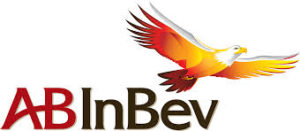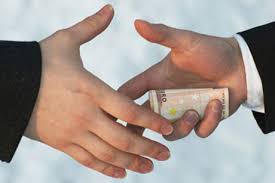 It didn’t make the news, but back in August AB-Inbev was fined $200,000 for breaching the Liquor and Gaming Regulation. This was after receiving three warnings earlier in the year for similar breaches. Officially they were found in contravention of section 81(e) of the regulation. That section reads:
It didn’t make the news, but back in August AB-Inbev was fined $200,000 for breaching the Liquor and Gaming Regulation. This was after receiving three warnings earlier in the year for similar breaches. Officially they were found in contravention of section 81(e) of the regulation. That section reads:
No liquor supplier or officer, director or employee of a liquor supplier and no liquor agency or representative of a liquor agency required to be registered under section 62 of the Act may … directly or indirectly make or offer to make a loan or advance or give or offer to give money, a rebate, a concession or anything of value to a liquor licensee or to an employee or agent of that licensee.
In short, there were caught offering inducements. Inducements are a form of bribe. They can come in many forms – free kegs, extra merchandise, trips, hockey tickets and so on. It can even be as big as paying for a tap line or covering the cost of installing a tap system in a bar. The flipside for this generosity is that the licensee (bar or liquor store) will give the brewery exclusivity or preferential access of some form. Often inducements are used to elbow out a competitor (“if you kick off X’s tap and put ours on, we will pay/give you X”).
Inducements happen at all levels of the liquor industry, but it stands to reason that the larger the operator the more money they have available to use for inducements.
What’s the problem, you may say. It is just the free market at work. Maybe. But the Alberta government (and every other government in the country) believes otherwise. They view inducements as an unfair distorting of the market, giving certain advantage to some players over others. Plus, I suspect, they are worried about a creeping corruption in the industry. In many ways the liquor industry is over-regulated in Canada, but one can appreciate that we don’t want the Wild West out there either – and a free-flowing system of bribes and blackmail is hardly the stuff of an orderly industry.
Except that governments do a lousy job enforcing them. Which is what makes the AB-Inbev fine so significant. Getting caught at offering inducements is rare. A fine of that size is even rarer, so it must have been a huge violation. Of course no one at the AGLC or AB-Inbev is talking about what exactly occurred, so I can’t offer details about that specific case, but I can say unequivocally that it is noteworthy for its size.
So how common are inducements and how rare are sanctions? It is impossible to quantify the first question, although everyone in the industry says it is huge issue. As for the second, the AGLC has so far in 2017 issued 198 decisions/sanctions. That total includes both gaming and liquor infractions. Most of the violations are minor – pubs allowing staff to drink on duty, allowing drinking in unlicensed areas or failing to submit an application within time limits, etc. Often just a warning is issued or a small fine of a few hundred dollars.
So far in 2017 there have been 3 penalties for inducements, including the recent AB-Inbev sanction. The other two are:
- In February Molson Canada was fined $5000
- In May, Big Rock was fined $44,481. They were assessed an additional $7000 fine for obstructing an inspector
That’s it. Three fines. Notably all three are fairly sizeable players in the market. (For completeness, I should note that Half Hitch Brewing was fined $1000 in January, but that was for permitting alcohol consumption in an unauthorized area.)
Given the widespread use of inducements in the industry, why are there only three sanctions? In my opinion two reasons. First, it can be hard to prove. If both the brewery and the bar/store are in on the deal, there is no one to blow the whistle. Most inducements never get revealed because they take place quietly. Who would notice a few kegs of Bud Light “falling off the truck”? Or how do we know the bar owner got those Oiler tickets from the brewery?
Second, enforcement is scant. AGLC inspectors are responsible for lots of things. They are active and regularly inspect bars, breweries and stores. Highly visible infractions, such as serving minors, violations of serving hours and so forth can easily be found with in-person inspections. But inducements happen in the back room and once complete there is no lasting evidence. Investigating those kind of infractions takes a different kind of approach. It requires asking questions, procuring documents and generally more detective work. That takes time and resources.
Further, if it stands to reason the big boys are more active at inducements than smaller players, then it means any crackdown would hit them the hardest. The big players also happen to have disproportionate influence over the industry, making the AGLC reluctant to get on their wrong side too much.
If the government believes inducements are negative, then they need to get serious about enforcing their rules against them.
Which is why I say rather than a sign that the system is working, AB-INbev’s $200,000 fine is evidence that the system is broken. And it is time to fix it.


October 31, 2017 at 1:11 PM
A thought; if these big companies with lots of money are fined, they can simply pay off the fine and continue with illegal-business-as-usual.
What if the brewery and the restaurant/store/bar were banned from doing business with each other for a year? or 5 years? or forever? Would a harsher consequence help clean up these dirty deals?
October 31, 2017 at 4:32 PM
A good point. 50 or 100 grand is a drop in the bucket for them.
October 31, 2017 at 1:17 PM
Why is the Brewery the only party that is fined? There is no downside for the bar as they are receiving a free item and if they are caught they don’t pay a fine. The bars may be a better target for enforcement and both parties should be fined i feel.
October 31, 2017 at 4:32 PM
Good question. I think part of the issue is that the offense is offering the inducement, not necessarily receiving it. However, putting penalties on both parties might help, especially since the bar is likely a smaller player who will feel the fine more directly.
November 10, 2017 at 8:53 AM
Please. Alberta Craft brewers are just as guilty as AB and Molson. Tap handles are extremely difficult to secure and all these new craft breweries are quick to offer a free keg to the pub in order to get the tap. They have no money so the only option is to offer product. Bars are just as guilty in that they accept the free keg – run the beer for a month and then wait for the next dumb craft brewer to come in the door and offer the same deal. At the same time they play the big brewers for all sorts of inducements. Excise allows a percentage of shrinkage from raw goods to finished product and too many micros are slipping free kegs and or packaged beer out the back door in order to secure draft listings or use as a promotional tool. The gate swing both ways on this issue.
November 10, 2017 at 9:10 AM
Years ago the ex chairman of the AGLC recommended removing the inducement clause from the legislation entirely. He was simply tired of hauling the offending brewery/distillery into his office, lecturing them about the offense and then slapping their wrist; only to have the brewer promise to reform and then return to business as usual the next week. A panel was formed and hearings were held to review this proposal. The hypocrisy was that several industry bar owners that I personally been involved with testified against removing this clause and stated that “they had never accepted an inducement in any form in all the years they had been in business”. The chariman and I exchanged bewildered looks as both our eyes rolled backwards and smirked in disbelief. Obviously the proposal did not go forward. So here we are several years later and illegal inducement remains endemic and part of the alcohol culture across Canada. So yes the problem is enforcement and heavier fines; but also an industry that accepts and encourages inducements as a normal business practise. If a neophyte micro opts to enters into this type of business practise then they are labelled forever. Bar owners and managers talk among themselves and the word quickly spreads as to who is willing to drop free kegs.